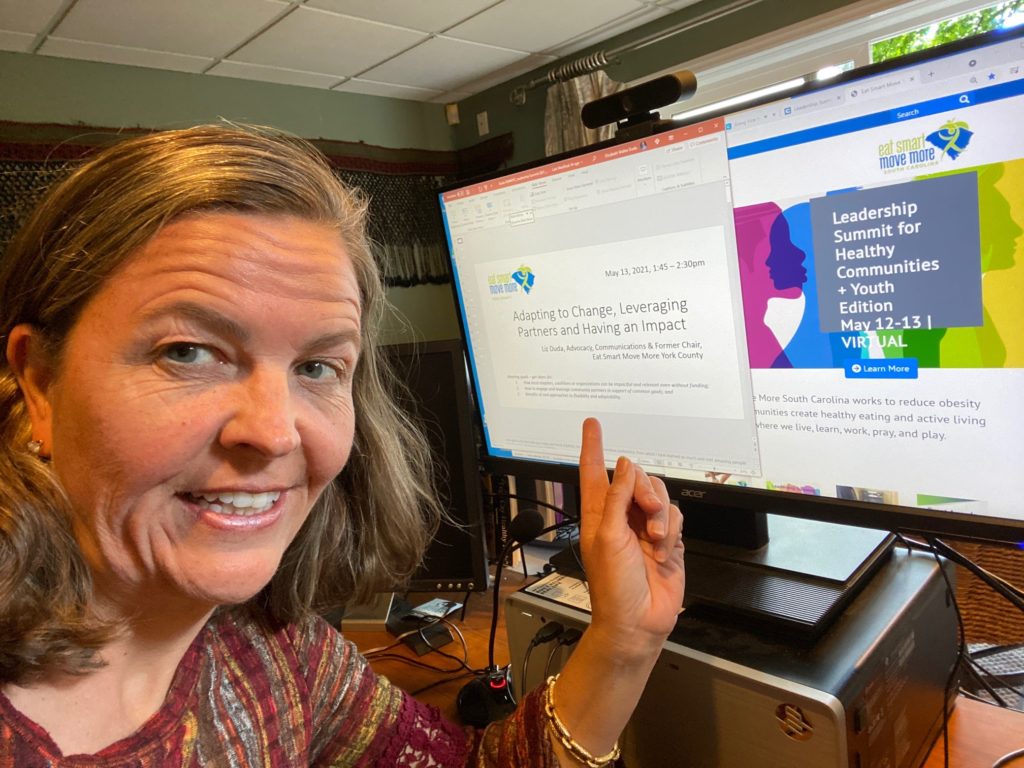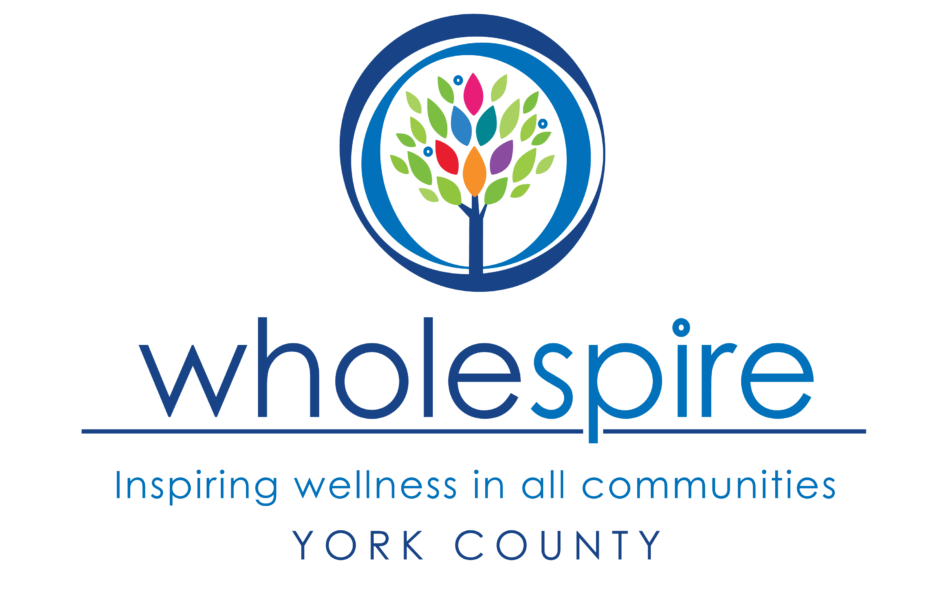By Liz Duda, past Eat Smart Move More York County chair; Advocacy and Communication Committee chair

May 20, 2021 (York County, SC) I recently presented on “Adapting to Change, Leveraging Partners and Having an Impact” on behalf of Eat Smart Move More York County (ESMMYC) at the annual Leadership Summit for Healthy Communities. One important question I received was “how do you effectively engage the school districts?”
How do you effectively engage the school districts?
I responded by explaining ESMMYC’s partnerships with school districts – these coalition members are true champions for children’s health:
- The Rock Hill School District’s lead nurse, Sadie Kirell, is on our advisory committee. She originally was drawn to ESMMYC by the Healthy Together 5-2-1-0 program, promoting healthy eating and active living, that we rolled out in local elementary schools in partnership with Atrium Health. She continuously drives healthy change in her school district, which ESMMYC supports (e.g., by speaking at school board meetings). For example, Rock Hill School District’s multi-year Alliance for a Healthier Generation initiative, with which Sadie has been intimately involved, has tied right in with ESMMYC’s Healthy Together 5-2-1-0 program’s goals. And ESMMYC continues to benefit from Sadie’s wise counsel on ESMMYC efforts whenever we need her. Over the past couple of years, Sadie also has staffed the school district’s wellness committee, which oversaw implementing a district-wide new Healthy Snacks Policy in 2019.
- The York School District’s nutrition director, Latisha Holt, who also heads up the York County USDA summer feeding program, is on our leadership team. We learned about her work to reduce food waste in her school district and invited her to speak at our general membership meeting. (See “Food Share Program in the York School District.”) Seeing her passion for driving impactful change, we asked her to join our leadership team. She has been a solid resource and partner to our chapter. Lately, Latisha also has chaired York School District’s wellness committee.
- A Clover School District Board member, Jessica Cody, is on our advisory committee. She used to be ESMMYC’s Let’s Go coalition coach and Healthy Together 5-2-1-0 setting lead. She is still a good ESMMYC connection to the school district. And the school board benefits from her healthy perspectives at its policymaking level.
- The ESMMYC chair before me, Roland Cabading, was the Fort Mill School District nutrition director. His experience, understanding and leadership were also helpful in seeking sustainable policy, environment, and systems change through the school district’s wellness committee, which he chaired.
A takeaway – find school teachers, staff or administrators as champions. Partner with them, and support their efforts!
School (District) Wellness Committees and School Improvement Councils
Also, the state requires school district wellness committees (a.k.a., Comprehensive School Health Advisory Councils) and school improvement councils (SICs). Each must have community representation (i.e., you!), and meetings open to the public (i.e., you again!). These councils are great ways to get involved in the schools!

- Leadership team member, Dr. Dave Keely, is a member of Ebinport Elementary’s (Rock Hill School District) School Improvement Council. He has supported their healthy efforts including safe pedestrian access to the school, school gardens, and the Healthy Together 5-2-1-0 initiative.
- I am a member of the Fort Mill School District wellness committee. ESMMYC members, who are recognized resources for good health in our community, often attend the meetings. The wellness committee drafts the school district’s wellness policy, and we know that good policy is a great driver for healthy change.
- I launched a school wellness committee at my children’s elementary school. As part of that, I organize Tega Cay Elementary’s annual bike- and walk-to-school days, in partnership with the school, PTO and police department. I also organize the monthly Family Friday Walk/Bike to School Days. We use these events to promote values that are important to the school including community; environmentalism; physical activity; cycling, pedestrian and crosswalk safety; and a shorter carline. (See “Walk and Roll Safely to School Together.”) School administrators even cited these events in the annual letter home to parents as a successful example of community partnerships.
What else do we do to engage school districts?
We share what we learn from one school district with the others. For example, we shared Clover School District food waste reduction program information with the Fort Mill School District. We then helped with its grant application to launch its own program. Further, we leveraged the person that the Fort Mill School District hired with that grant funding to support the successful growth of the Healthy Together 5-2-1-0 initiative in all of the District’s elementary schools. Overall, we try to keep the ideas coming and conversation open. And we leverage our relationships. We aim to be responsive and helpful – and targeted, especially since schools are busy! Many ESMMYC members are parents ourselves and involved in our children’s schools and districts. And we all know how important it is to work together to raise healthy children and teach them a healthy lifestyle for the long term.
And why is engaging school districts so important?
I say this is “important” because children spend over a third of their waking hours at school. Teachers, administrators, staff, bus drivers, and PTA/PTO volunteers are role models to our kids and influence their behaviors. They can choose to give gummy worms daily to reward kindergartners who are standing quietly in line; candy on Fridays to students who were well behaved on the bus that week; sweet treats as fundraisers; and free ice cream celebrations quarterly for students who complete their math sheets; and encourage cupcakes in the classroom to celebrate birthdays. They can decide to take away recess or assign walking laps as a punishment. All without parental input.
In fact, the above examples led me to the ESMMYC advocacy committee in 2014. A school district employee, then also ESMMYC chair, suggested that I would benefit from working with others to effect healthy change in the schools and our community.
Everyone wants to help children lead healthy lifestyles. Healthier kids feel better and do better in school. But many people just need a better understanding of how to support this. They don’t see that individual actions of the kids’ many role models add up.


